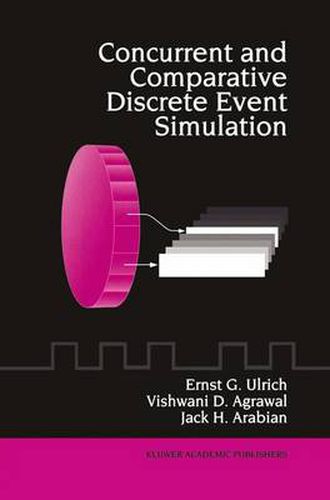Readings Newsletter
Become a Readings Member to make your shopping experience even easier.
Sign in or sign up for free!
You’re not far away from qualifying for FREE standard shipping within Australia
You’ve qualified for FREE standard shipping within Australia
The cart is loading…






This title is printed to order. This book may have been self-published. If so, we cannot guarantee the quality of the content. In the main most books will have gone through the editing process however some may not. We therefore suggest that you be aware of this before ordering this book. If in doubt check either the author or publisher’s details as we are unable to accept any returns unless they are faulty. Please contact us if you have any questions.
Concurrent simulation is over twenty years old. During that pe riod it has been widely adopted for the simulation of faults in digital circuits, for which it provides a combination of extreme efficiency and generality . Yet, it is remarkable that no book published so far presents a correct and sufficiently detailed treatment of concurrent simulation. A first reason to welcome into print the effort of the authors is, therefore, that it provides a much needed account of an important topic in design automation. This book is, however, unique for sev eral other reasons. It is safe to state that no individual has contrib uted more than Ernst Ulrich to the development of digital logic simulation. For concurrent simulation, one may say that Ernst has contributed more than the rest of the world. We would find such a claim difficult to dispute. The unique experience of the authors con fers a special character to this book: It is authoritative, inspired, and focused on what is conceptually important. Another unique aspect of this book, perhaps the one that will be the most surprising for many readers, is that it is strongly projected towards the future. Concurrent simulation is presented as a general experimentation methodology and new intriguing applications are analyzed. The discussion of multi-domain concurrent simulation– recent work of Karen Panetta Lentz and Ernst Ulrich—is fascinat ing.
$9.00 standard shipping within Australia
FREE standard shipping within Australia for orders over $100.00
Express & International shipping calculated at checkout
This title is printed to order. This book may have been self-published. If so, we cannot guarantee the quality of the content. In the main most books will have gone through the editing process however some may not. We therefore suggest that you be aware of this before ordering this book. If in doubt check either the author or publisher’s details as we are unable to accept any returns unless they are faulty. Please contact us if you have any questions.
Concurrent simulation is over twenty years old. During that pe riod it has been widely adopted for the simulation of faults in digital circuits, for which it provides a combination of extreme efficiency and generality . Yet, it is remarkable that no book published so far presents a correct and sufficiently detailed treatment of concurrent simulation. A first reason to welcome into print the effort of the authors is, therefore, that it provides a much needed account of an important topic in design automation. This book is, however, unique for sev eral other reasons. It is safe to state that no individual has contrib uted more than Ernst Ulrich to the development of digital logic simulation. For concurrent simulation, one may say that Ernst has contributed more than the rest of the world. We would find such a claim difficult to dispute. The unique experience of the authors con fers a special character to this book: It is authoritative, inspired, and focused on what is conceptually important. Another unique aspect of this book, perhaps the one that will be the most surprising for many readers, is that it is strongly projected towards the future. Concurrent simulation is presented as a general experimentation methodology and new intriguing applications are analyzed. The discussion of multi-domain concurrent simulation– recent work of Karen Panetta Lentz and Ernst Ulrich—is fascinat ing.